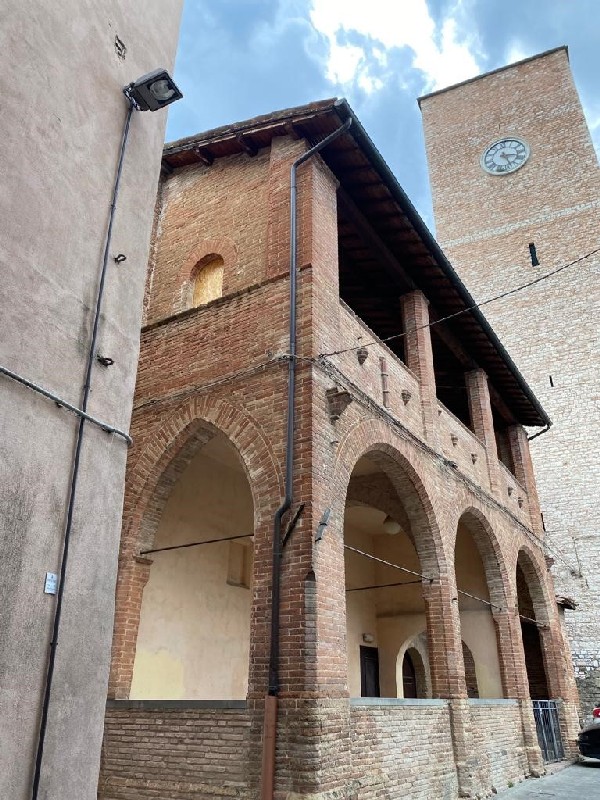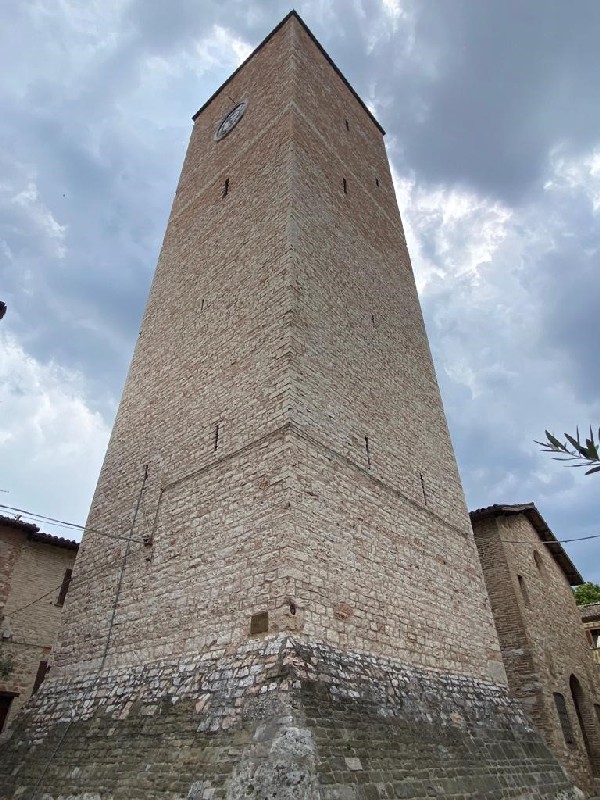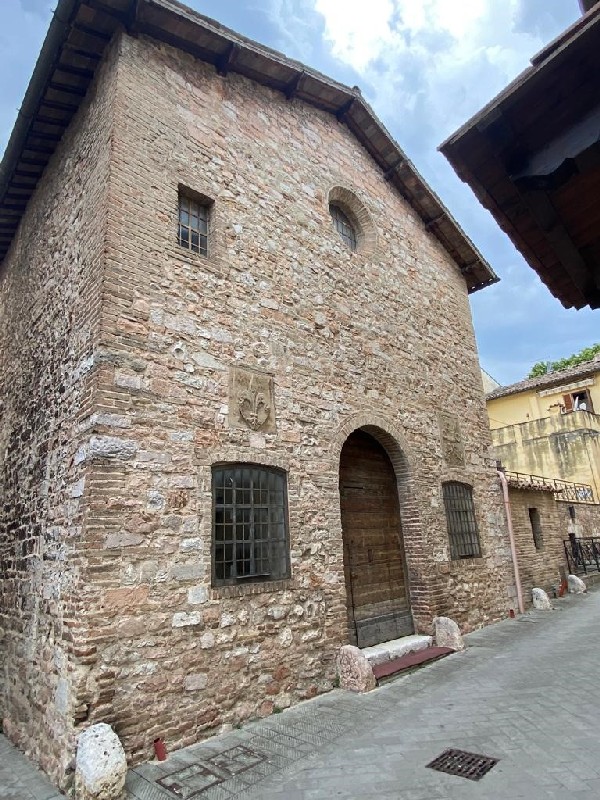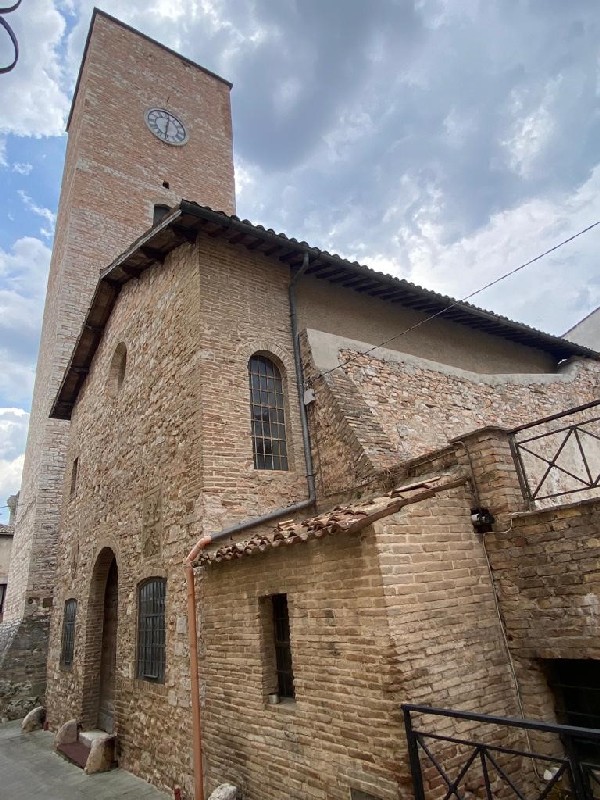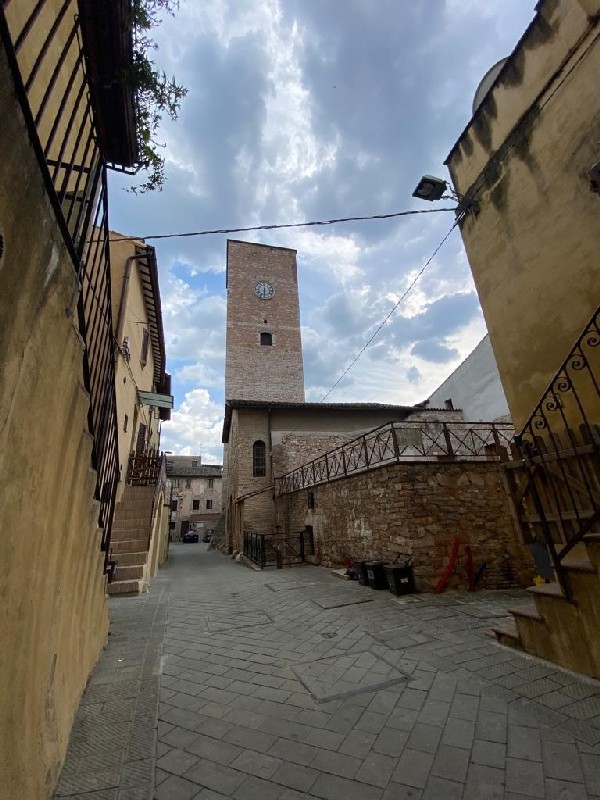The area where the castle stands was already inhabited by the Umbrians many centuries before Christ. The Castello di Sant'Eraclio is an interesting example of a well-preserved lowland castle. It was erected by Nallo Trinci, lord of Foligno, in the XIV century, with a high ring of walls. Today, only the two side towers and the two entrance gates - one towards Foligno and the other towards Trevi – remain and they still have the structure for the drawbridge. Inside the walls, there is the ancient church, the parallelepiped watchtower, originally taller with a crenelated terrace, which was lowered in 1775 by approximately 8 meters. In its interior there was the so-called 'castle house' consisting of two floors: on the ground floor a large balcony that was used as a market and a place of assembly, now closed, and on the upper floor the hall of honor and the castellan's flat. The castle was a refuge for the inhabitants in times of war. With the fall of the Trinci family in 1439, the building returned to the Church and the Papal legates ran it. In the XV century, it passed to the community of Foligno with other fortresses and castles by the concession of Pope Callisto III.
THE CASTLE CHURCH
The castle church, formerly under the title of Sant’Eraclio, whose cult was attested as early as 982 b.C. and later renamed Santa Croce, preserves some frescoes by painters from Foligno such as the Madonna col bambino e i Santi Giovanni Battista, Sebastiano e Lorenzo attributed to Cristoforo di Jacopo and a later San Rocco by Bernardino Mezzastris. On the façade instead, there is a XIX century reproduction of the commemorative plaque with the emblem of the Trinci Family.
SANT’ERACLIO SQUARE
Outside the castle, on the square, there is a monumental fountain with three lion protomes from the XV century, commissioned by Paolo III bearing his papal coat, a column surmounted by a cross by Nicola Brunelli, where tradition has it that the Saint was martyred. Then there is the Chiesa di San Marco, built in 1587 and converted to three naves in the first half of the XVIII century by Feliciano Mazzarello.

Il progetto Divina Foligno è sviluppato nell’ambito del “programma Agenda urbana di Foligno Smart community - Comunità, Sostenibilità – Foligno 2020” intervento OT.6 INT_01 “Realizzazione della rete di attrattori culturali attraverso la realizzazione di itinerari culturali e tematici

The Divina Foligno project is promoted and financed as part of the "Urban Agenda of Foligno Smart community - Community, Sustainability - Foligno 2020 program" intervention OT.6 INT_01 "Creation of a network of cultural attractions through the creation of cultural and thematic itineraries"

Copyright © 2022 Landmark. All rights reserved.



